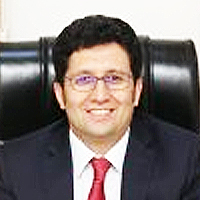Intracerebral Hemorrhage of Brainstem in triple pregnancy after in vitro fertilization by receiving Ovum Donation: A case report and review
Published on: 16th December, 2019
Deliveries prior to 28 weeks’ gestation (extreme preterm birth) pose a global health concern, according to the World Health Organization (WHO). Extreme preterm birth is associated with several complications in the newborn and management in neonatal intensive care unit would incur high expenses. In parallel, advancements in in vitro fertilization will give an opportunity for women to conceive in cases of ovarian failure. At the same time, health providers also encourage patients to receive more than one embryo simultaneously during an embryo transfer. Here we report a case of a patient in coma condition of triplet pregnancy, post ovum donation with three-embryo transfer. Following stabilization, cranial computed tomography (CCT) was performed. The result showed bleeding in the brainstem and into intraventricular spaces at 25+4 gestation weeks. Furthermore, ICH during pregnancy is considered as a rare case in obstetrical field, especially involving the brainstem. This could lead to life-threatening conditions and serious disability in the future. On the fifth day of hospitalization, she suffered from pneumonia and pulmonary edema. On the eight day (26+5 gestations weeks), an emergency caesarean section was performed due to fully dilated of the cervix with breech presentation of all fetuses. Mother and the children survived with some non-life-threatening disabilities.
This is the very first case reported of intracerebral hemorrhage in the brainstem in triplet pregnancy after receiving ovum donation. Heterologous conception could be an iceberg phenomenon of gestational complications among the population. Reproductive tourism could still become greater in the future.
Role of perioperative plasma D-dimer in intracerebral hemorrhage after brain tumor surgery: A prospective study
Published on: 2nd August, 2022
Background: Intracerebral hemorrhage (ICH) is one of the most feared complications after brain tumor surgery. Despite several factors being considered to influence bleeding, an increasing number of clinical studies emphasize that hemostatic disorders, developed during surgical aggression and tumor status, could explain unexpected ICH. The objective of this prospective study was to evaluate the influence of perioperative D-dimer levels on ICH after brain tumor surgery. Methods: This prospective, observational, 18-month study, at a single third-level hospital, included all consecutive adults operated on brain tumors and postoperative stay in an intensive care unit. Three blood samples evaluated D-dimer levels (A-baseline, B-postoperative and C-24 hours after surgery). The normal range considered was 0-500ng/ml. ICH, as a primary outcome, was defined as bleeding that generates radiological signs of intracranial hypertension either by volume or by mass effect on the routine CT scan 24 hours after surgery. Other tumor features and hemostasis variables were analyzed. Chi-squared and Fisher’s exact test were used in the inferential analysis for qualitative variables and Wilcoxon and T-Test for quantitative ones. P-value < 0.05 was considered significant for a confidence interval of 95%. Results: A total of 109 patients operated on brain tumor surgery were finally included, 69 male (63,30%) and 40 female (36,70%), with a mean age of 54,60 ± 14,75 years. ICH was confirmed in 39 patients (35,78%). Their average of DDimer was A-1.526,70 ng/dl, B-1.061,88 ng/dl, and C-1.330,91 ng/dl (A p0.039, B p0,223 C p0.042, W-Wilcoxon test). The male group was also associated with ICH (p0,030 X2 test). Of those 39 patients with ICH, 30 in sample A (76,9%), 20 in sample B (51,28%) and 35 in sample C (89,74%) had a D-dimer > 500 ng/dl (p0,092, p1, p0,761 X2 test) and the relative risk of developing a postoperative hematoma in this patients was increased 0,36-fold presurgery, 0,25-fold postsurgery and 0,40-fold 24hours after surgery. D-dimer variation, had no statistical significance (p0,118, p0,195, p0,756 T-test). Platelets and prothrombin activity were associated with D-dimer levels only in sample A (p 0,02 and p 0,20, W Wilson). Conclusion: High levels of perioperative D-dimer could be considered a risk marker of ICH after brain tumor surgery. However, more studies would be worthwhile to confirm this association and develop primary prevention strategies for stroke.
The Fundamental Role of Dissolved Oxygen Levels in Drinking Water, in the Etiopathogenesis, Prevention, Treatment and Recovery of Cerebral Vascular Events (Stroke)
Published on: 16th January, 2025
Stroke is a clinically defined syndrome of acute focal neurological deficit attributed to vascular injury (infarction, hemorrhage) of the central nervous system. Stroke is the second leading cause of death and disability worldwide. Stroke is not a single disease but can be caused by a wide range of risk factors, disease processes and mechanisms. Approximately 15% of strokes worldwide are the result of intracerebral hemorrhage, which can be deep (basal ganglia, brainstem), cerebellar or lobar. A minority (about 20%) of intracerebral hemorrhages are caused by macrovascular lesions (vascular malformations, aneurysms, cavernomas), venous sinus thrombosis or rarer causes.
A Comparative Study of Metoprolol and Amlodipine on Mortality, Disability and Complication in Acute Stroke
Published on: 4th April, 2025
Stress in acute stroke may increase mortality and complications, but there is a paucity of information on the efficacy of beta blockers over other anti-hypertensive. To report efficacy of metoprolol over amlodipine in reducing mortality, disability and infections in acute stroke. CT/MRI confirmed stroke patients within 3 days of onset were included whose age was 18 to 75 years. Patients with secondary intracerebral hemorrhage, organ failure, pregnancy, malignancy, and immunosuppressant or on beta-blocker/amlodipine were excluded. Stroke risk factors, Glasgow Coma Scale (GCS) score, National Institute of Health Stroke Scale (NIHSS) score and CT/MRI findings were noted. Patients with a blood pressure of > 160/90 mm of Hg were randomized using 1:1 randomization to metoprolol (25 mg on day 1, 50 mg if BP is not controlled) or amlodipine (2.5 mg on day 1, then 5 mg then 10 mg on, subsequent days if BP is not controlled). Other standard treatment was continued. The primary outcome was mortality at 1 month; secondary outcomes included were in-hospital gastrointestinal hemorrhage, pneumonia, sepsis and 3 months functional outcome based on modified Rankin Scale (mRS). Side effects were noted. 18 (14.4%) patients died; 6 (9.7%) in metoprolol and 12 (19%) in amlodipine (p = 0.20) group. At 3-months, 66 patients had good outcome; 45 (80.4%) in metoprolol and 21 (43.3%) in amlodipine group (p < 0.001). The other secondary outcomes were comparable between the two groups. Metoprolol was withdrawn in 6 patients due to bradycardia, and amlodipine in 5 due to hypotension and in 1 due to allergic reaction. Metoprolol is associated with improved functional outcomes in acute stroke compared to amlodipine.




